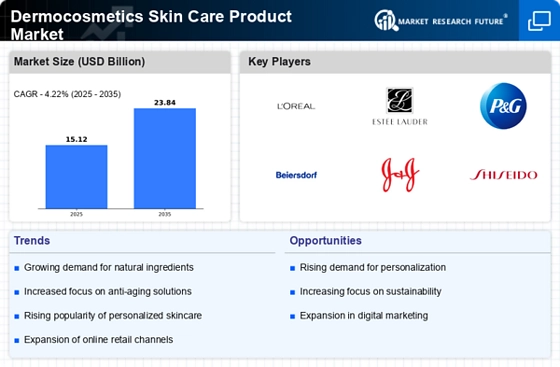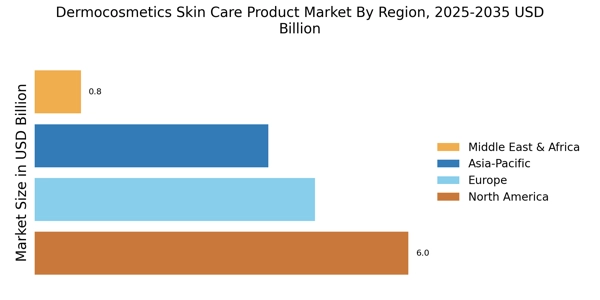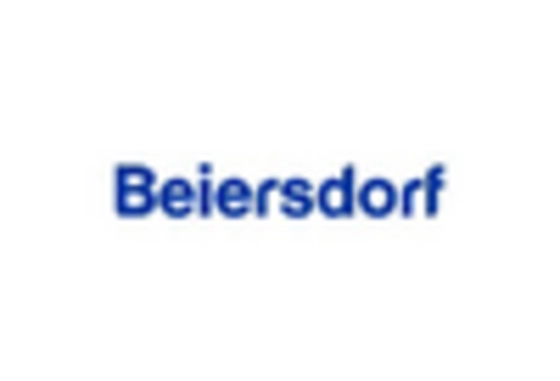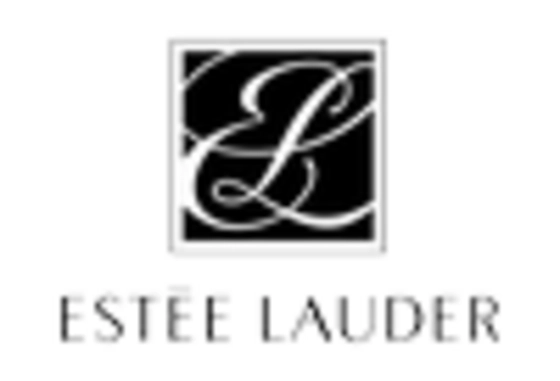Increased Awareness of Skin Health
There is a growing awareness regarding skin health, which is significantly influencing the Dermocosmetics Skin Care Product Market. Consumers are becoming more educated about the importance of skincare routines and the role of dermocosmetics in maintaining skin integrity. This heightened awareness is leading to an increase in the adoption of products that are clinically tested and dermatologically approved. Market data indicates that consumers are increasingly prioritizing products that offer therapeutic benefits, such as hydration, protection from environmental stressors, and treatment for specific skin conditions. As a result, brands are responding by developing targeted solutions that cater to diverse skin types and concerns. This trend is expected to continue, further driving the growth of the Dermocosmetics Skin Care Product Market.
Rising Demand for Anti-Aging Products
The Dermocosmetics Skin Care Product Market is witnessing a notable increase in demand for anti-aging products. As consumers become more aware of skin health and the effects of aging, they are seeking solutions that promise to reduce wrinkles, fine lines, and other signs of aging. This trend is particularly pronounced among the aging population, which is projected to grow significantly in the coming years. According to recent data, the anti-aging segment is expected to account for a substantial share of the dermocosmetics market, driven by innovations in formulations and active ingredients. Brands are increasingly focusing on research and development to create effective anti-aging solutions, thereby enhancing their market presence. This growing consumer interest in maintaining youthful skin is likely to propel the Dermocosmetics Skin Care Product Market forward.
Expansion of E-commerce and Digital Marketing
The expansion of e-commerce and digital marketing strategies is transforming the Dermocosmetics Skin Care Product Market. With the increasing penetration of the internet and mobile devices, consumers are more inclined to purchase skincare products online. This shift is facilitating access to a wider range of dermocosmetic products, allowing consumers to explore various brands and formulations from the comfort of their homes. Additionally, digital marketing campaigns are effectively educating consumers about product benefits and usage, further driving sales. Industry expert's indicates that online sales channels are expected to grow at a faster rate compared to traditional retail, as brands invest in enhancing their online presence. This trend is likely to reshape the competitive landscape of the Dermocosmetics Skin Care Product Market, as companies adapt to the evolving shopping behaviors of consumers.
Technological Advancements in Product Formulation
Technological advancements in product formulation are playing a crucial role in shaping the Dermocosmetics Skin Care Product Market. Innovations in biotechnology and ingredient sourcing are enabling brands to create more effective and safer products. For instance, the incorporation of peptides, antioxidants, and other active ingredients has been shown to enhance the efficacy of dermocosmetic products. Furthermore, advancements in delivery systems, such as microencapsulation, are improving the absorption and stability of these ingredients. Market analysis suggests that these technological innovations are not only attracting consumers but also fostering brand loyalty, as customers seek products that deliver visible results. As the industry continues to evolve, the integration of cutting-edge technology is likely to remain a key driver of growth in the Dermocosmetics Skin Care Product Market.
Growing Popularity of Natural and Organic Ingredients
The trend towards natural and organic ingredients is significantly impacting the Dermocosmetics Skin Care Product Market. Consumers are increasingly seeking products that are free from harmful chemicals and synthetic additives, favoring formulations that utilize natural extracts and organic components. This shift is driven by a desire for safer, more sustainable skincare options that align with personal values regarding health and the environment. Market data indicates that products labeled as 'natural' or 'organic' are experiencing higher sales growth compared to conventional products. Brands are responding to this demand by reformulating existing products and launching new lines that emphasize clean beauty. This growing preference for natural ingredients is expected to continue influencing consumer purchasing decisions, thereby propelling the Dermocosmetics Skin Care Product Market.


















Leave a Comment